Introduction
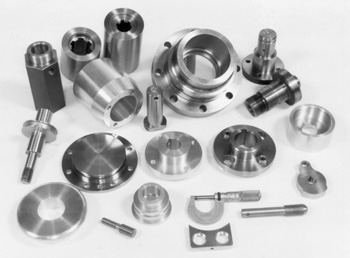 People call alloy steel with chromium content greater than 12% or nickel content greater than 8% as stainless steel. This steel has certain corrosion resistance in the atmosphere or in corrosive media, and has high strength at higher temperatures (>450°C). Steel with a chromium content of 16% to 18% is called acid-resistant steel or acid-resistant stainless steel, and is commonly referred to as stainless steel.
People call alloy steel with chromium content greater than 12% or nickel content greater than 8% as stainless steel. This steel has certain corrosion resistance in the atmosphere or in corrosive media, and has high strength at higher temperatures (>450°C). Steel with a chromium content of 16% to 18% is called acid-resistant steel or acid-resistant stainless steel, and is commonly referred to as stainless steel.
Feature
Stainless steel has the characteristics of corrosion resistance, scale resistance, acid resistance, impact resistance and toughness in a wide temperature range. Depending on the environment, it can provide a variety of grades and surface finishes, making these parts an ideal choice for many applications. The chromium in the steel allows the formation of a rough, invisible, corrosion-resistant chromium oxide film on the steel surface. If the material is mechanically or chemically damaged, the film will repair itself (assuming oxygen is present). In addition, its 100% recyclable feature provides a new way for stainless steel as an environmentally friendly material. Therefore, it has been widely used in heavy industry, light industry, daily necessities industry and building decoration industries.
The Classes of Stainless Steel
Stainless steel is usually divided into 5 different categories. Each element is identified by an alloying element that affects its microstructure and is named for this. Are Austenitic,
Austenitic Grade
Austenitic stainless steel is the most commonly used type of stainless steel and is not magnetic. The most common austenitic alloy is iron-chromium-nickel steel, widely known as the 300 series. Mainly add chromium (about 18% to 30%) and nickel (about 6% to 20%). Due to the high content of chromium and nickel, austenitic stainless steel is the most corrosion-resistant in the stainless steel group. It maintains its strength at high temperatures and is easy to maintain, and is highly formable, thereby providing exceptionally excellent mechanical properties. They can be cold worked but cannot be heat treated. Usually used to manufacture shafts, valves, bolts, bushings, nuts, aircraft accessories, brewing equipment and cryogenic vessels.
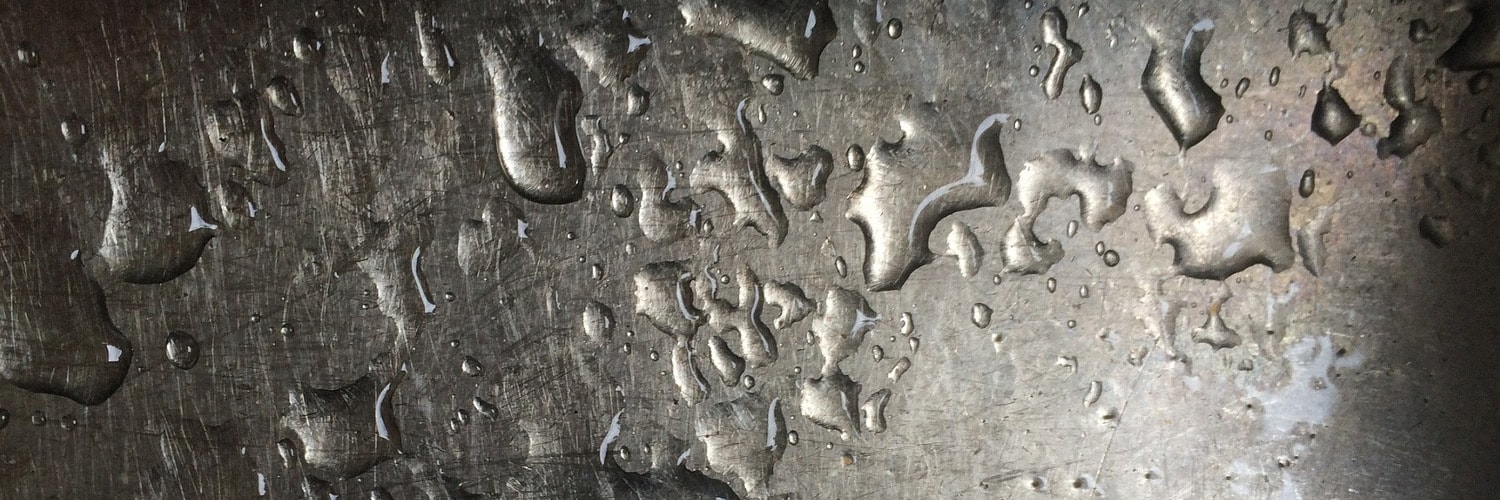 Standard Grade
Standard Grade
The standard grade of austenitic stainless steel contains up to 0.08% carbon. There is no minimum carbon requirement.
Low Carbon Grade (L grade)
The “L” grade is used to provide additional corrosion resistance after welding. The letter “L” after the stainless steel grade indicates low carbon (such as 304L). The carbon content should be maintained at a level of 0.03% or lower to avoid carbide precipitation. Due to the temperature generated during the welding process (which can cause carbon precipitation), the “L” level is usually used. Generally, stainless steel rolling mills can provide these stainless steel grades with dual certification, such as 304 / 304L or 316 / 316L.
High Carbon Grade (H grade)
Stainless steel “H” grade has a minimum carbon content of 0.04% and a maximum carbon content of .10%. Higher carbon helps maintain strength at extreme temperatures. The letter “H” after the stainless steel grades represents these grades. This grade will be used when the end use involves extreme temperature environments.
Type 304
One of the most commonly used (austenitic) stainless steel grades, with a basic composition of 18/8 (18% chromium, 8% nickel) and a maximum carbon content of 0.07%, also known as A2 stainless steel.
It has excellent corrosion resistance, is easy to process, and has excellent formability after CNC machining. Type 304 / 304L has good formability and excellent welding characteristics, and is ideal for various household and commercial applications.
Its high content of chromium and nickel makes it the first choice for manufacturing processing equipment used in the chemical (mild chemicals), food/dairy and beverage industries.
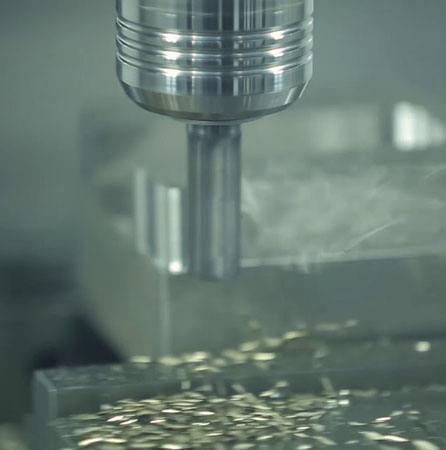
Type 309
Higher chromium and nickel content can provide better corrosion resistance and high temperature fouling resistance, suitable for high temperature applications up to 1900F. Strong corrosion resistance. 309 can be cold worked, but not heat treated. It is weldable and relatively easy to process.
This alloy is commonly used in furnace parts, thermowells, power station boiler tube hangers, generators, paper mills, refineries, brazing fixtures, bolts, refractory brackets and furnace linings.
Type 316
It is the second most widely used steel after 304, containing 16% to 18% chromium, 11% to 14% nickel, and at least 2% molybdenum. These combine to improve its corrosion resistance. In particular, molybdenum is used to help control pitting corrosion of corrosion. This grade can resist fouling at temperatures up to 1600 F.
Used in chemical processing, pulp and paper industry, food and beverage and surgical equipment, processing and distribution, and corrosive environments. Because it has better resistance to chloride corrosion than 304, it is also used in the marine industry. SS316 is usually used in nuclear fuel recovery devices. 18/10 grade stainless steel usually meets this application level.
Type 317
If the molybdenum content is higher than 316, the molybdenum content of this grade must be greater than 3%. This alloy is weldable, easy to work, and can be cold and hot worked. But it cannot be heat treated.
Commonly used in strong corrosive environments, often used in scrubber systems of air pollution control equipment. It is an ideal material for manufacturing generators, absorption towers, boilers, condenser tubes, heat exchanger tubes, pressure vessels, chimney pipe fittings and valves
Type 317L limits the maximum carbon content to a maximum of 0.030%. Silicon can be up to 0.75% for additional corrosion resistance.
Type 321
The titanium content is at least five times the carbon content. This is done to reduce or eliminate chromium carbide precipitation caused by welding or exposure to high temperatures.
Suitable for environments with temperatures up to 1500 degrees Fahrenheit. It is prone to creep and fracture, and has high resistance to stretch and vibration fatigue. Mainly used for manufacturing aircraft exhaust pipes and manifolds, jet engine parts, boiler shells, heaters, etc.
Type 348
The columbium-tantalum content binds carbon and helps to avoid precipitation of chromium carbide during welding. It has excellent corrosion resistance after exposure to temperatures of 800-1500°F.
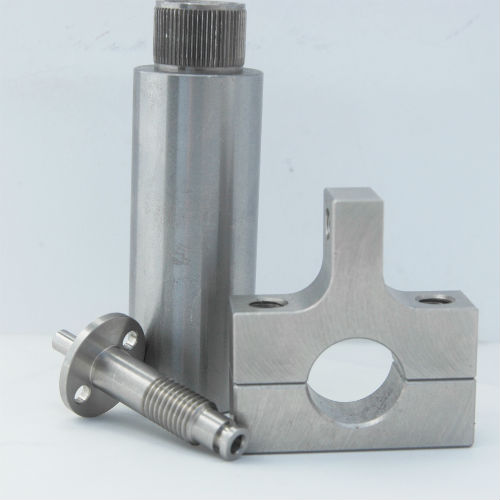
Martensitic Grade
Martensitic stainless steel grades are a group of corrosion-resistant and hardenable (using heat treatment) stainless steel alloys. The martensite grade is a straight chromium steel that does not contain nickel. They are magnetic, can be hardened by heat treatment, and are not as corrosion resistant as austenitic stainless steel. Martensite grades are mainly used where hardness, strength and wear resistance are required.
Usually used to manufacture pump shafts, bolts and screws, valves, bushings, rivets, coal tanks, tableware, jet engine parts, aircraft parts, mining machinery, rifle barrels and fire extinguisher inserts. Common grades include 410, 414, 416, 420, 431, and 440.
Type 410
The basic martensite grade contains the lowest alloy content among the three basic stainless steels (304, 430 and 410). Low cost, general purpose, heat-treatable stainless steel. Stainless steel 410 contains at least 1.5% chromium, so it is particularly resistant to corrosion by many chemicals and acids. It is widely used in places where corrosion is not serious (air, water, certain chemicals and edible acids). The application of this product may include parts that require a combination of strength and corrosion resistance, such as fasteners.
Compared with 410 type, 410S has lower carbon content, higher weldability, but lower hardenability. Type 410S is a general-purpose corrosion-resistant and heat-resistant chromium steel recommended for corrosion-resistant applications.
Type 414
Nickel (2%) is added to improve corrosion resistance. Applications include bolts and nuts, pressure plates, valve components, knife surgical instruments and petroleum refining equipment. Typical applications include springs and tableware.
Type 416
A special variant of 410, the added phosphorus and sulfur can improve the cutting performance and can be heat treated. Typical applications include screw machine parts.
Type 420
Add carbon to improve the mechanical properties. It can be heat treated up to about 500 Brinell hardness, and has the greatest corrosion resistance after fully hardened. Suitable for all kinds of precision machinery, bearings, electrical, equipment, instruments, meters, transportation tools, household appliances, etc. It is mostly used to manufacture parts that are resistant to atmospheric, water vapor, water and oxidizing acid corrosion.
Type 431
The nickel content is 1.252% and the chromium content is increased, which has higher corrosion resistance and good mechanical properties, and the corrosion resistance is better than 410 steel and 430 steel. It has the highest corrosion resistance among all hardenable martensitic stainless steels. It can be hot worked or cold worked and hardened up to 40 HRC. Typical applications include valves, pumps, aircraft components, propeller shafts and marine equipment.
Type 440
There are three commonly used models of 440 stainless steel B: 440A, 440B, 440C, and 440F (easy processing type). The further increase of chromium and carbon content helps to improve the toughness and corrosion resistance of this type. The hardness can reach 58HRC, which is among the hardest stainless steels. Typical applications include surgical instruments, such as medical scalpels, scissors, nozzles, bearings, etc.
Ferritic Grade
Ferritic stainless steels, like martensitic steels, are pure chromium steels that do not contain nickel, which are resistant to corrosion and oxidation, while maintaining resistance to stress and cracking. Although these steels are magnetic, they cannot be hardened by heat treatment. They can be cold worked and softened by annealing. They have higher corrosion resistance than martensite grades, but are generally not as good as austenitic grades. Usually used in decorative strips, sinks and certain automotive applications (such as exhaust systems). Common grades include 405, 409, 430, 434, 436, 442, and 446.
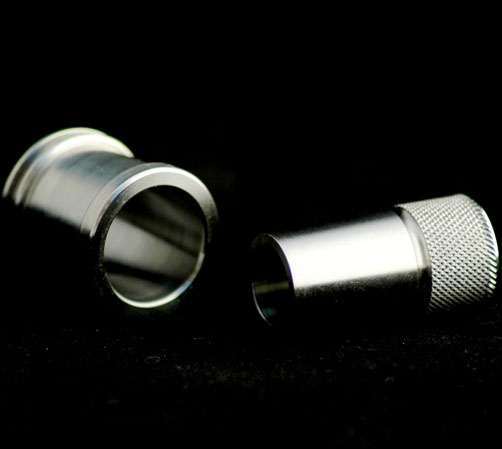
Type 405
Contains 12% chromium and adds aluminum. After cooling from high temperatures, this chemical composition helps prevent hardening. Ideal for welding applications. Highly shaped and easy to process. Typical applications include heat exchangers, steam turbine materials, parts for quenching, etc.
Type 409
Containing 11% chromium, because the chromium content is the lowest among all stainless steels, this is the smallest amount of passivation surface film that forms the corrosion resistance of stainless steel, and it is one of the cheapest stainless steel grades.
This type can only be used for internal or external parts in non-critical corrosive environments. Typical applications include silencers.
Compared with carbon steel, 409 alloy has strong corrosion resistance and can be used as an alternative material for carbon steel in a mildly corrosive environment. Because of its higher corrosion resistance and high temperature oxidation, it has advantages.
Type 430
430 stainless steel is a general-purpose steel with good corrosion resistance. It has better thermal conductivity than austenite, a smaller thermal expansion coefficient than austenite, heat fatigue resistance, addition of stabilizing element titanium, and good mechanical properties of the weld. 430 stainless steel is used for building decoration, fuel burner parts, household appliances, and home appliance parts.
430F is a steel grade with free-cutting performance added to 430 steel. It is mainly used for automatic lathes, bolts and nuts. 430LX adds Ti or Nb to 430 steel, reduces C content, improves processing performance and welding performance. It is mainly used in hot water tanks, hot water supply systems, sanitary appliances, household durable appliances, bicycle flywheels, etc.
Type 434
Containing 12% to 30% chromium, molybdenum is added to improve corrosion resistance. Its corrosion resistance, toughness and weldability increase with the increase of chromium content, and its resistance to chloride stress corrosion is better than other types of stainless steel. 434 is an improved steel grade of 430 steel, which is more resistant to salt than 430 steel, and is often used in automobile decoration parts and fasteners.
Type 436
436 stainless steel is a modified steel grade of 434. Columbium is added to this grade to improve its corrosion resistance and heat resistance. Can be used for deep drawing parts, gas burners, dishwashers, range hoods, steam irons, pans, etc.
Type 442
It has extremely high corrosion resistance because of its high chromium content, excellent heat resistance and anti-scaling properties, but it cannot be heat treated and is difficult to process. Applications include furnaces and combustion parts, zinc die casting machines, nitrogen fixing parts, nitric acid storage tanks
Type 446
The high chromium content (27%) can further improve the corrosion resistance and scale resistance at high temperatures. High temperature and corrosion resistance, no flaking oxide scale below 1082℃, used in combustion chamber.
Precipitation Hardening (PH) Grades
Like martensite, precipitation hardening stainless steel can also be strengthened and hardened by heat treatment. Its strength, hardness and corrosion resistance are better than martensitic chromium stainless steel. It usually has higher strength than austenitic stainless steel and remains at high temperatures. Can maintain most of its strength. Usually called PH type stainless steel, both contain relatively high chromium content and are used to manufacture military equipment and aerospace structural components. Common grades include 17-7 PH, PH 15-7 Mo, 17-4 PH and 15-5 PH.
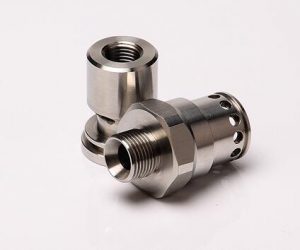
Type17-7
After solid solution treatment of 17-7PH stainless steel, it becomes unstable austenite structure with good ductility and workability. After adjustment, the composition of austenite precipitates and carbides changes, and then after martensite transformation treatment, most The structure transforms into low-carbon tempered martensite with better toughness. This state is the state of use of steel and has good mechanical properties at medium temperature. The corrosion resistance of 17-7PH is better than that of general martensitic stainless steel.
Type PH 15-7 Mo
It is a steel grade developed with 2% molybdenum instead of 2% chromium in 0Cr17Ni7Al steel. Its basic performance is similar to that of 17-7PH steel, but its overall performance is better. In the austenite state, it can withstand various cold forming and welding processes. After heat treatment, the highest strength can be obtained. It has excellent high temperature strength below 550°C. It is used in the manufacture of thin-walled structural parts for aviation, various containers, pipelines, springs, valve membranes, ship shafts, compressor discs, reactor parts, and various chemical equipment and other structural parts.
Type 17-4
Alloy 17-4 is a chromium copper precipitation hardening stainless steel with excellent oxidation and corrosion resistance. The mechanical properties such as strength, ductility and oxidation resistance can be optimized by heat treatment. This grade can be heat treated at various temperatures; it produces a wide range of finished product properties. This grade must not be used at temperatures higher than 300°C or very low temperatures.
Type 15-5
This is a variation of the older 17-4 chromium-nickel-copper precipitation hardening martensitic stainless steel. The toughness of 15-5 alloy is higher than 17-4. Compared with other similar martensitic grades, it is used for applications requiring better corrosion resistance and lateral performance.
Duplex (Ferritic-Austenitic) Grade
Duplex stainless steel is the latest stainless steel, a combination of austenitic and ferritic materials. It is famous for its extremely high strength and resistance to stress corrosion cracking. The strength of these grades is about twice that of austenitic and ferrite grades. Although they do have better toughness and ductility than ferritic steels, they do not reach the level of austenitic steels. Easy to heat treatment, but difficult to cold form. Usually used to manufacture chemical processing equipment, pressure vessels and heat exchanger components.
Duplex stainless steels are divided into the following 4 categories:
The first type is a low-alloy type, representing the brand UNS S32304 (23Cr-4Ni-0.1N), the steel does not contain molybdenum, and the PREN value is 24-25. It can be used instead of AISI304 or 316 in terms of stress corrosion resistance.
The second category is a medium alloy type, the representative grade is UNS S31803 (22Cr-5Ni-3Mo-0.15N), the PREN value is 32-33, and its corrosion resistance is between AISI 316L and 6% Mo+N austenitic stainless steel between.
The 3rd category is a high-alloy type, generally containing 25% Cr, also containing molybdenum and nitrogen, and some also containing copper and tungsten. The standard grade is UNSS32550 (25Cr-6Ni-3Mo-2Cu-0.2N), and the PREN value is 38-39 The corrosion resistance of this type of steel is higher than that of 22% Cr duplex stainless steel.
The 4th category belongs to super duplex stainless steel type, containing high molybdenum and nitrogen, standard grade UNS S32750 (25Cr-7Ni-3.7Mo-0.3N), and some also contain tungsten and copper, PREN value is greater than 40, suitable for harsh Medium conditions, with good corrosion resistance and mechanical comprehensive properties, comparable to super austenitic stainless steel.
Processing Characteristics
In the long-term practice of processing stainless steel parts, SANS has concluded that stainless steel has the following characteristics in the CNC cutting process:
Severe work hardening:
The plasticity of stainless steel is large, the character is distorted during plastic deformation, and the strengthening coefficient is large; and the austenite is not stable enough, under the action of cutting stress, part of the austenite will be transformed into martensite; plus the compound Under the action of cutting heat, impurities are easily decomposed and distributed in a dispersed manner, so that a hardened layer is produced during cutting. The work hardening caused by the previous feed or the previous process seriously affects the smooth progress of the subsequent process.
Large cutting force:
The plastic deformation of stainless steel in the cutting process is large, resulting in an increase in cutting force. Stainless steel has serious work hardening and high thermal strength, which further increases the cutting resistance, and it is also difficult to curl and break the chips.
High cutting temperature:
The plastic deformation and friction with the tool are large during cutting, and a lot of cutting heat is generated; a large amount of cutting heat is concentrated on the interface between the cutting area and the tool-chip contact, and the heat dissipation condition is poor.
Chips are not easy to break and bond:
Stainless steel has great plasticity and toughness. Chips are continuous during CNC machining, which not only affects the smooth operation of the operation, but also crushes the processed surface. Under high temperature and high pressure, stainless steel has a strong affinity with other metals, which is prone to adhesion and formation of built-up tumors, which not only aggravates tool wear, but also tears and deteriorates the processed surface.
The tool is easy to wear:
The affinity in the process of cutting stainless steel causes the bonding and diffusion between the tool and the chip, thereby causing the tool to produce bonding wear and diffusion wear, resulting in crescent craters on the rake face of the tool, and the formation of tiny cutting edges In addition, the hardness of carbide (such as TiC) particles in stainless steel is very high. When cutting, it directly touches and rubs with the tool, scratches the tool, and the phenomenon of work hardening will increase tool wear.
Large linear expansion coefficient:
The linear expansion coefficient of stainless steel is about 1.5 times that of carbon steel. Under the action of cutting temperature, the workpiece is prone to thermal deformation and the dimensional accuracy is difficult to control.
Stainless steel is increasingly used in the fields of electric power, aviation, aerospace, petroleum and food industries because of its special properties. Although stainless steel cutting has the characteristics of high thermal strength, large plastic deformation, severe work hardening, excessive cutting heat, and difficulty in heat dissipation, the quality of stainless steel processing can be guaranteed by selecting appropriate tools, cutting fluid, cutting amount, and processing methods.
Advantages Of Stainless Steel Machining Parts
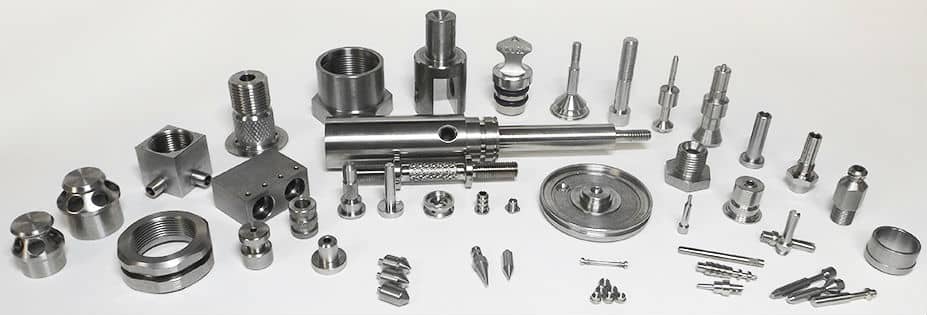 The thin and dense chromium-rich oxide film on the surface of stainless steel makes stainless steel water pipes have good corrosion resistance in all water quality including soft water, even if they are buried in the ground, they have excellent corrosion resistance.
The thin and dense chromium-rich oxide film on the surface of stainless steel makes stainless steel water pipes have good corrosion resistance in all water quality including soft water, even if they are buried in the ground, they have excellent corrosion resistance.
Stainless steel can work safely for a long time at a temperature of -270℃-400℃, no matter it is high temperature or low temperature, no harmful substances will be precipitated, and the material performance is quite stable.
The stainless steel material is safe and non-toxic, no corrosion and exudation, no peculiar smell or turbidity, and will not cause secondary pollution to the water quality. It keeps the water quality pure and hygienic, and the sanitary safety is fully guaranteed.
Stainless steel has corrosion resistance, enhanced strength, steel deformation is not easy to break and environmental protection performance, not easy to rust, and has good ductility and toughness. Suitable for use in harsh environments (indoor and outdoor environments such as humidity, acid and alkali).
Application Of Stainless Steel Machining Parts
1. Medical Industry
There are too many stainless steel needles, stainless steel scalpels, stainless steel wheelchairs, stainless steel infusion stands, and stainless steel medical tweezers. Especially in the use of orthopedics may be essential every day.
Due to the excellent comprehensive performance of stainless steel, the more mature manufacturing technology, and the low price, stainless steel is used more and more widely in the medical field. The use of stainless steel in the medical field has become a major development trend.
2. Electronic and Hosuhold Industry
Due to the performance of stainless steel, stainless steel has been widely used in other electronic fields. For example, the current water heaters are made of stainless steel for surgery, and the heating tubes of coffee machines are all made of stainless steel. There are others, you may know it in your daily life.
3. Automotive Industry
The invasion of stainless steel into the automotive sector is almost the biggest. The automotive field is currently the fastest growing stainless steel application field. Nowadays, the most important manufacturing material for automobiles is basically stainless steel. Mainly used in the body, exhaust system, fuel tank, frame and stainless steel parts and car decoration. Due to the large demand for stainless steel in automobiles, the automotive field is basically one of the main forces in the development of stainless steel
Stainless steel can also be used in some high-end mechanical fields, such as food industry, chemistry, medical equipment, aircraft exhaust pipes, etc. Stainless steel has been widely used in industries such as heavy industry, light industry, daily necessities industry and architectural decoration.
We, at SANS Machining, are committed to providing high-quality services at competitive prices. Our broad experience combined with our expertise has helped us take up various complex projects with ease. Our long list of happy and satisfied customers is the testament of our commitment to provide quality services at fastest turnaround times. Contact us or request a quote today about utilizing our stainless steel CNC machining services.




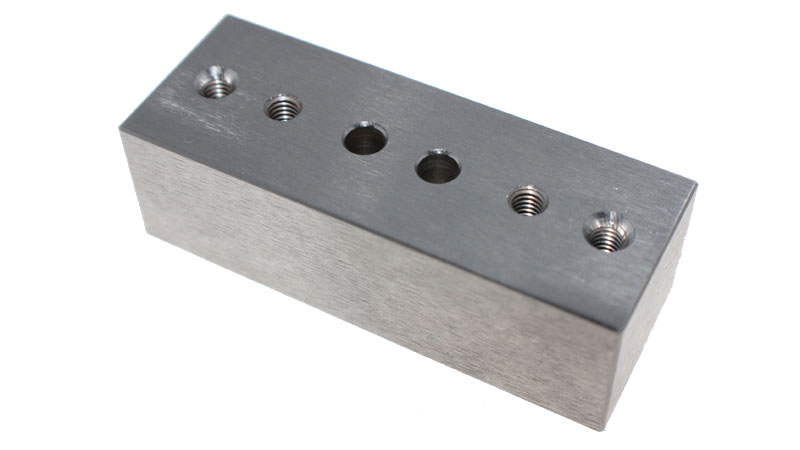
This is an authoritative source for all the information on stainless steel, thank you for letting me know more